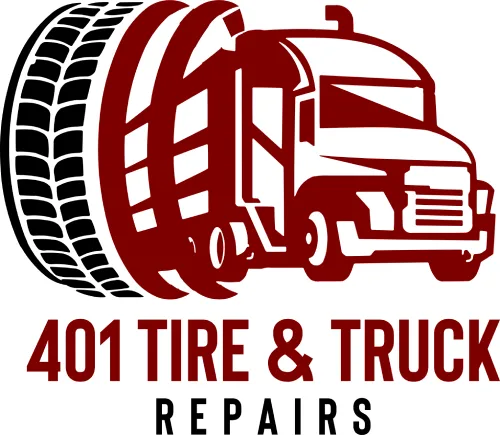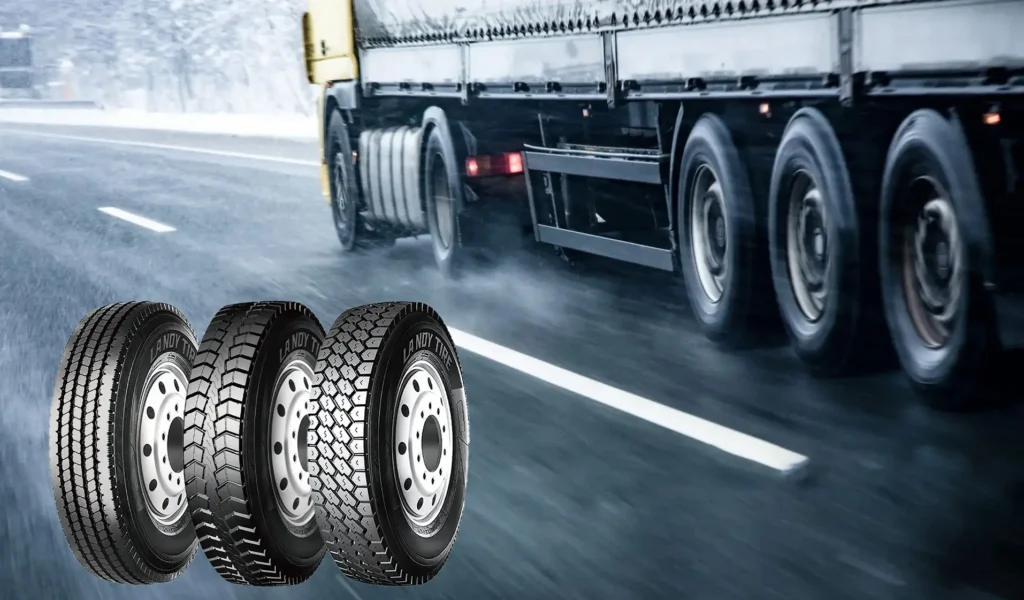Choosing the right tires is more than picking the best brand or the lowest price. For truck operators in Woodridge (or anywhere), a smart decision about tires can mean better safety, lower operating cost, more uptime, and a happier driver. The needs of a long-haul rig are very different from those of a truck doing local or delivery work. In this article, 401 Tire and Truck Repairs walks you through what makes those differences important, what to look for, and how to make the right choice for your operation.
Table of Contents
- What “Long Haul” and “Local Delivery” Really Mean
- Key Differences Between Long-Haul and Local Delivery Conditions
- Technical Specs That Matter (Tread, Compound, Load, Speed, etc.)
- Cost Considerations: Beyond the Sticker Price
- Maintenance and Lifecycle in Each Use Case
- Tips for Truck Owners in Woodridge / Northern Illinois
- How 401 Tire and Truck Repairs Can Help You Pick the Right Tires
- Conclusion
1. What “Long Haul” and “Local Delivery” Really Mean
Before getting into tire specs, let’s define:
- Long Haul: Trucks that travel large distances, often interstate or over long stretches of highway, maybe hundreds of miles in a run. Routes are more continuous, fewer stops, more time at cruise speeds.
- Local Delivery / Short Haul: Trucks that stay in a smaller service area, perhaps daily return to base. Many stops, starts, turns, slow traffic, varying pavement quality, more idling.
These definitions vary by fleet, geography, and how “local” is defined (city limits, county, regional radius). But the differences affect everything: tire wear, stress, fuel use, and risk of damage.
2. Key Differences Between Long-Haul and Local Delivery Conditions
Here are the environmental and operational pressures that differ depending on whether you run long or local:
| Factor | Long Haul Conditions | Local Delivery Conditions |
|---|---|---|
| Average speed | More time at high, constant highway speeds | Frequent low speeds, stop-and-go, idling |
| Road types | Primarily highways, interstates with smoother pavement | City streets, smaller roads, alleys, curb impacts, perhaps gravel or rough patches |
| Number of stops / starts | Few per run | Many per run (pickups, drop-offs) |
| Turning / maneuvering | Less frequent, long straight stretches | Frequent turning, backing, tight maneuvers |
| Load consistency | More uniform, or scheduled loads | Varied loads, possibly lighter, possible heavier per stop depending on what’s carried |
| Heating, braking, acceleration stress | More constant speed, less braking; but higher sustained speed and heat buildup | More cycles of acceleration and braking; more stress on sidewalls and tread edges |
| Exposure to damage (curbs, debris) | Less in many cases | Higher risk of sidewall cuts, curb strikes, debris, potholes |
3. Technical Specs That Matter
Knowing the conditions, here are specs/features you want to target for each use case when selecting tires.
A. Tread Design & Pattern
- Long Haul
- Rib patterns (or continuous straight grooves) are common: help maintain stability, reduce rolling resistance, improve fuel economy.
- Closed shoulders help reduce heat and wear.
- Moderate tread depth (deep enough for long life but not so deep that rolling resistance penalizes fuel usage).
- Local Delivery
- More aggressive tread blocks may be needed for better grip during starts, stops, turns.
- Wider tread faces or special shoulder reinforcements to resist wear and curb damage.
- Deeper tread depth often helpful to deal with rough pavement, though balance with cost.
B. Rubber Compound
- For long haul, compounds that resist heat buildup and abrasion over many miles are essential. Durability under highway conditions is key.
- For local work, compounds that resist chunking, cuts, and frequent braking/acceleration cycles matter. Maybe slightly softer compound near the shoulder for grip but at a cost to life.
C. Load Rating & Size
- Proper load index ensures tire can carry the load safely. Overloading severely reduces life and increases risk.
- Match tire size to axle position (steer, drive, trailer) appropriately, considering weight distribution.
- In local delivery, variances in loads from stop to stop might mean rethinking inflation schedules to match load.
D. Speed Rating & Heat Management
- Long haul demands tires that can run at sustained highway speeds without overheating; good sidewall structure, internal heat dissipation.
- Local use has lower average speeds but more heat from braking/stopping; sidewalls and bead areas prone to damage, need robust construction.
E. Sidewalls and Casing Strength
- For long haul, sidewalls need to be strong but balanced with weight; overbuilt sidewalls add weight, fuel cost.
- Local deliveries require stronger sidewalls to resist curbs, rubs, debris. Casings must handle frequent flexing and possibly more frequent retreads or repairs.
F. Fuel Efficiency / Rolling Resistance
- This is often a big differentiator. For long haul, even small improvements in rolling resistance lead to large savings.
- For local delivery, fuel efficiency remains important, but the returns on low rolling resistance might be lower because lots of stops/starts reduce benefit.
- Manufacturers sometimes label tires with certifications or designations (e.g. “fuel-efficient,” “low rolling resistance”)—look for those.
G. Traction: Wet, Snow, Seasonal
- Both types need good traction in wet conditions, but local delivery often deals with more severe variations: tight turns on wet pavement, snow/ice in winter, etc.
- If operating in seasonal climates (snow, ice, salt), look for tires with sipes, special rubber that remains flexible in cold, or even winter-rated models.
4. Cost Considerations: Beyond the Sticker Price
Buying tires isn’t just about upfront cost. Here are cost-factors to consider that differentiate long haul vs local operations:
- Cost per Mile / Cost per Hour: A tire that’s more expensive but lasts longer or uses less fuel may be cheaper overall.
- Downtime Costs: Tire failures in remote long haul mode can cost a lot in towing, lost delivery time. Local failures may be easier/faster to repair, but frequent small failures add up.
- Retreading / Repairability: Casings that are suitable for multiple retreads provide good value, especially for regional/local use where damage or wear may be higher.
- Fuel Use & Other Consumables: Fuel is often the single biggest cost among all. Tires that reduce drag, rolling resistance, or heat build-up can help.
- Tire Lifecycle: For long haul, achieving high “removal mileage” is usually a goal (how many miles till the tire needs replacing). For local, maybe lifecycle is shorter, but durability against damage becomes more important.
5. Maintenance and Lifecycle in Each Use Case
Even the best tires fail early if maintenance is poor. Differences in maintenance between long haul and local:
- Inflation Pressure: Critical in both, but under-inflation hurts long haul more (fuel, heat, wear). Over-inflation hazards especially in local with frequent load shifts or road damage.
- Rotation & Alignment: Long haul trucks benefit from regular alignments and tire rotations to even wear; local delivery trucks might see asymmetric wear from many turns and curbs, demanding more frequent checks.
- Inspection: Checking tires for cuts, sidewall damage, tread irregularity regularly. Local delivery trucks traverse more hazards, so damage inspections more often.
- Cleaning / Debris Removal: Stones, glass, nails pick up in local routes; cleaning helps avoid embedded damage.
6. Tips for Truck Owners in Woodridge / Northern Illinois
To make this more local (so readers see relevance):
- Winters in Illinois bring snow, ice, freezing, salt. A truck that does mostly long haul needs winter-awareness anyway, but local trucks need to especially consider traction, rubber flexibility, sipes, snow and ice-season tires.
- Roads in DuPage / Will / Cook counties: you’ll hit city streets, curbs, potholes. Local delivery trucks must have stronger sidewalls and be more rugged.
- Short trips in cold weather: engines and tires don’t heat up fully, which increases wear. Proper inflation and waking up the tire heat helps.
- Fuel cost in local is often higher per mile because of idling and stop/starts; picking a tire that minimizes resistance and performs well under those conditions helps.
- Local/regional shops (like 401 Tire and Truck Repairs) can help with frequent maintenance; benefit from keeping a maintenance schedule closer to home base rather than having to drive far for service.
7. How 401 Tire and Truck Repairs Can Help You Pick the Right Tires
At 401 Tire and Truck Repairs, we specialize in helping truck owners in Woodridge and surrounding areas make the best tire decisions, because we know local conditions, and we know what long haul roads look like vs what local deliveries demand. Here’s how we assist:
- Route & Usage Assessment: We examine the routes you run (how many stops, how long, road types) to recommend tires tailored to your actual daily use.
- Comparisons of Fuel-Savings vs Durability: We’ll show you how a slightly more expensive long-haul tire may pay off vs a cheaper local model if your usage demands it—fuel, wear, repairs, etc.
- Winter Tire Options & Seasonal Swaps: We can advise or supply winter-rated tires, or dual purpose tires, and coordinate swap-overs.
- Maintenance & Repair Support: We do inflation, alignments, rotations, inspections, etc. This prolongs tire life.
- Retreading & Cost Optimization: If a tire casing is good, retreading can stretch value; we help you assess when that works.
8. Conclusion
Choosing the right truck tires isn’t a one-size-fits-all decision. If your truck spends most of its time on highway runs, long haul tire features like low rolling resistance, heat resistance, and maximum removal mileage will pay dividends. If your operation is more local—lots of starts, stops, tight turns, rough roads—durability, strong sidewalls, grip, and ability to handle damage are more critical.
At 401 Tire and Truck Repairs, we believe an informed choice is the best investment. Use the guidelines above when comparing tires, think about your actual routes and daily wear, and schedule regular maintenance. The right tire choice will save you money, reduce hassle, improve safety—and keep your trucks rolling smoothly.

